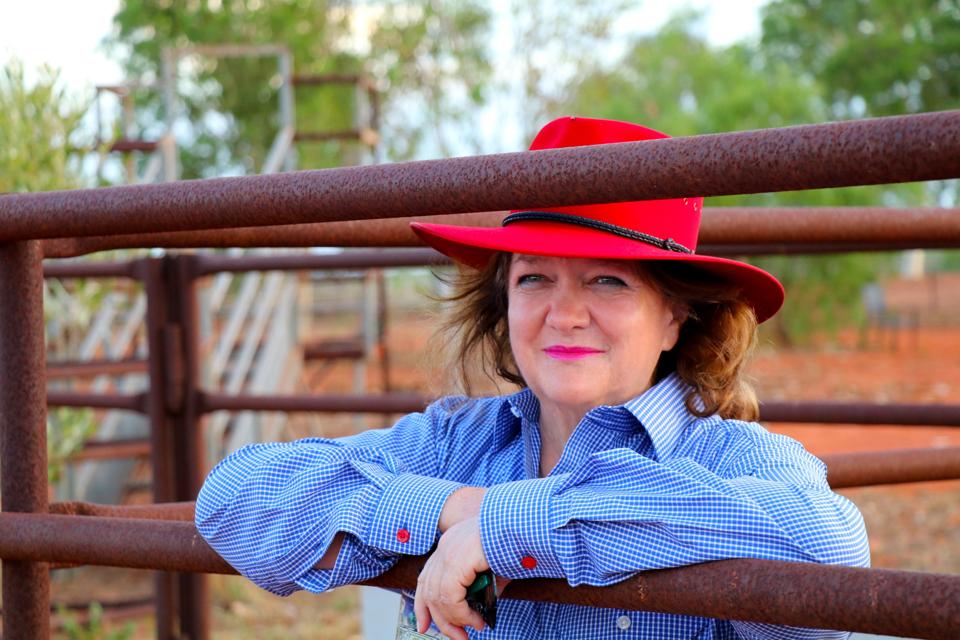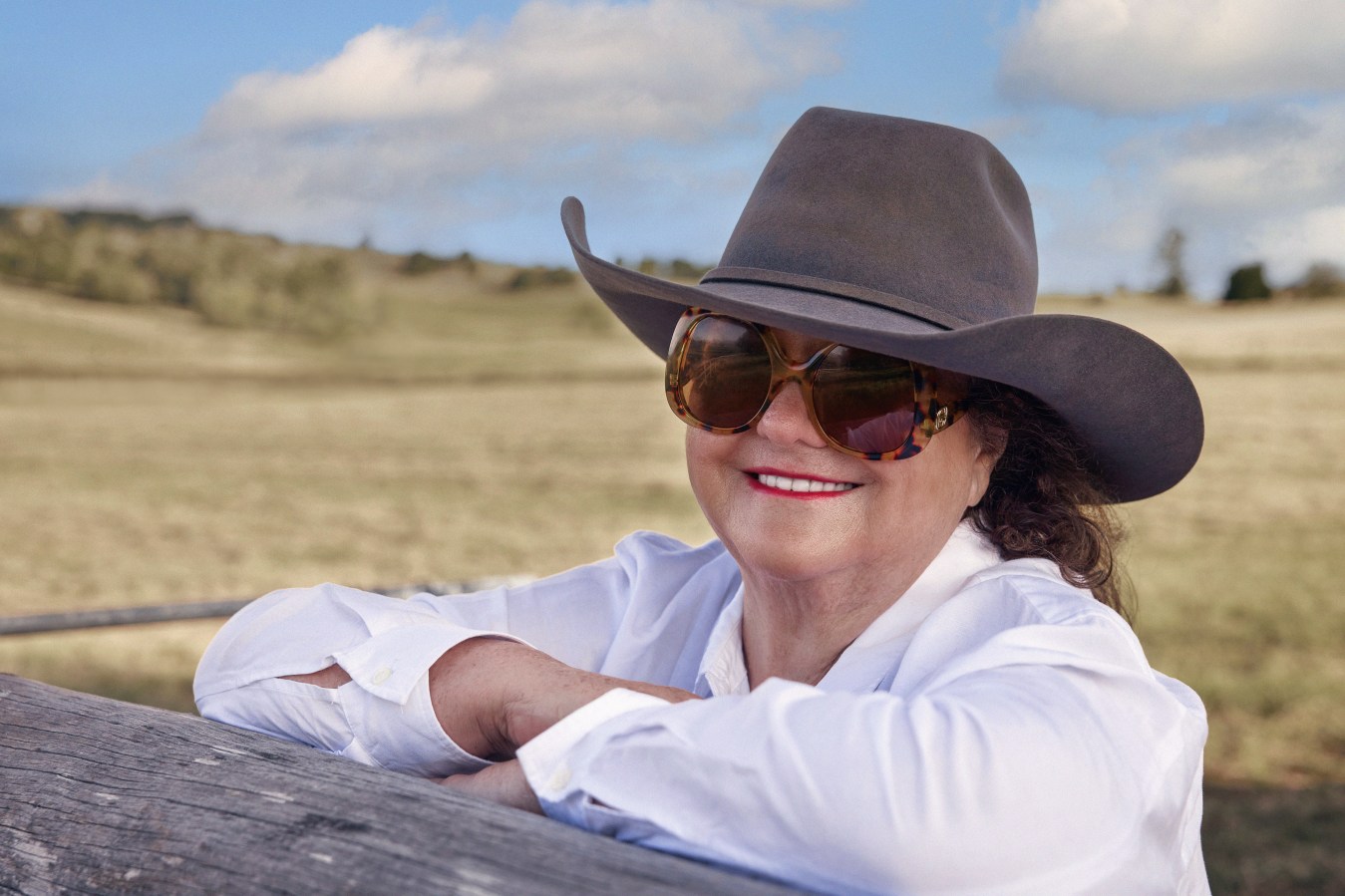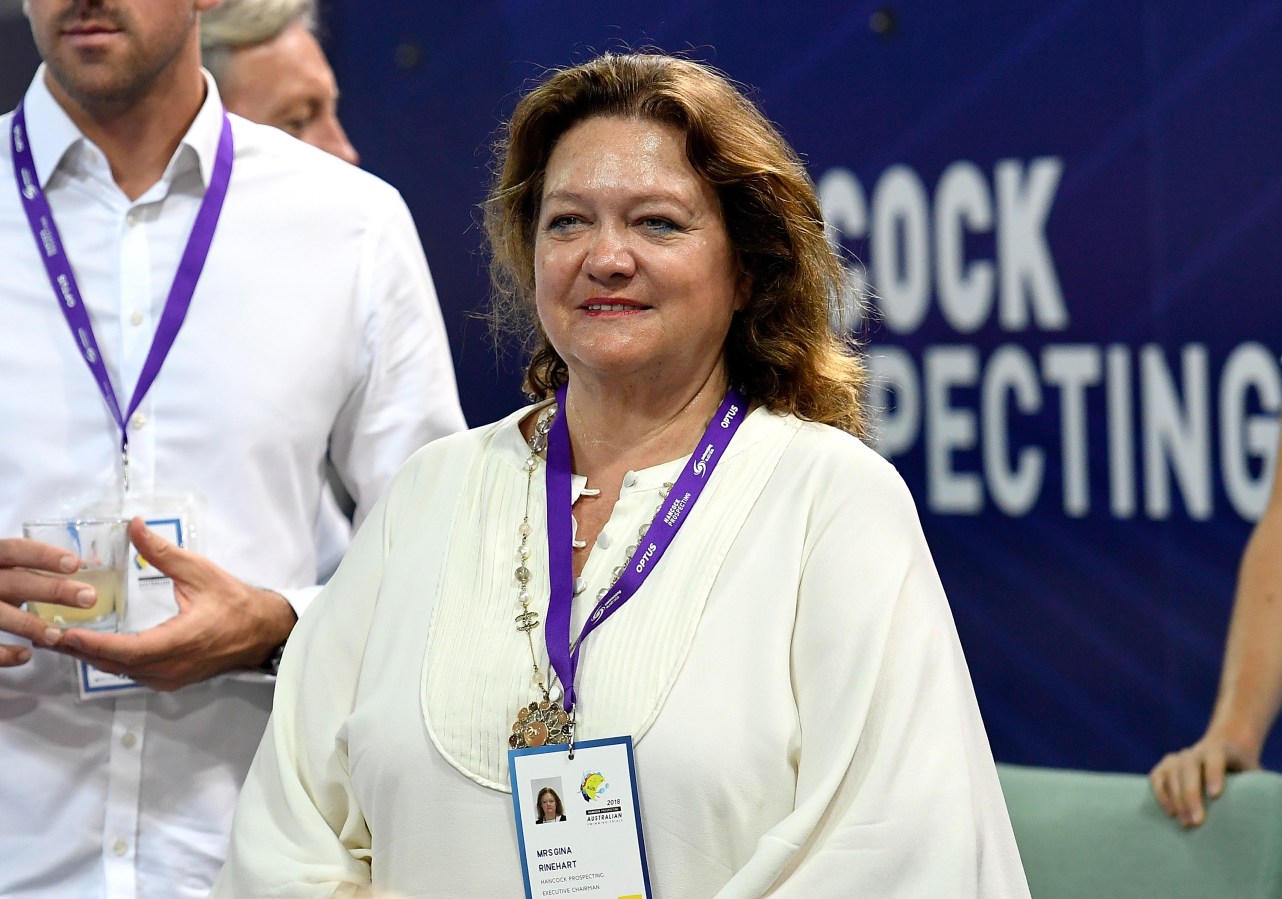Outside of China, the most influential investor in the world of rare earth elements has to be Gina Rinehart, Australia’s richest woman. Rare earths may be just a small part of her $30 billion mining fortune, but Rinehart, through family holding company Hancock Prospecting, has acquired big stakes in leading non-Chinese rare earths companies, including those looking to ramp up operations in the United States.

Gina Rinehart in Western Australia.
Courtesy Hancock Prospecting
Her $800 million rare earths pile includes a 8.5% stake worth $317 million in MP Materials (NYSE:MP), which operates the only working rare earths mine in the United States, at Mountain Pass on the California-Nevada border. MP is also near completion on a plant in Fort Worth that will make high-powered rare earth magnets for General Motors.
Rinehart also owns 8.2% or $430 million of Lynas Rare Earths (ASX:LYC), which mines the Mount Weld deposit in Australia. Lynas recently opened a processing plant in Malaysia and, with the backing of the U.S. Department of Defense, is building a plant near Corpus Christi, Texas.
Smaller holdings include 10% of Arafura (ASX:ARU), which has government backing for its Nolans mining project near Alice Springs, Australia; and 6% of Brazilian Rare Earths (ASX:BRE), another Aussie company with impressive discoveries in northeast Brazil.
Rinehart, 71, doesn’t just want to watch a portfolio, but has pushed for the rationalisation of the industry, to better compete with China. Last year she backed unsuccessful merger talks between Lynas and MP. Both companies in recent weeks have announced that in the face of uncertain Trump tariffs they would halt the shipment of the rare earth concentrates for processing in China and would instead stockpile them. “Selling these critical materials under 125% tariffs is neither commercially rational nor aligned with the national interest,” wrote MP spokesman Matt Sloustcher in an email last week.
President Trump in January signed the Energy Emergency Act, which aims to expedite rare earths processing capacity in the United States to combat China’s near monopoly. Last week Secretary of the Interior Doug Burgum announced the Fast-41 program, which supports 12 mining projects for copper, lithium, antimony and other critical minerals.
Rinehart, a friend of Trump, attended both his election night party at Mar-a-lago and his inauguration. She reportedly paid $100 million in 2023 for two properties near Trump in Palm Beach. Rinehart has admonished Australians to be more like Trump and think bigger. The only child of iron ore wildcatter Lang Hancock who died in 1992, Rinehart took over and rebuilt his ailing company Hancock Prospecting, becoming chairwoman in 1992. Its biggest asset is 70% of the Roy Hill mine complex in Western Australia’s Pilbara region, which cost $8 billion to build out and paid Hancock $1.8 billion in royalties last year alone.
Forbes has already extensively covered U.S. rare earths champion MP Materials in the past year (here and here), as well as other domestic rare earths miners like metallurgical coal company Ramaco (Nasdaq:METC), which is in earlier days of harvesting rare earths from Wyoming coal beds.
Lynas Rare Earths, on the other hand, is less well known. The Australian company emerged after China in 2010 placed a rare earths embargo on Japan after a dispute over permitted waters for a fishing trawler. This is when rare earths were first weaponized, said Gracelin Baskaran of the Critical Minerals Security Program at the Center for Strategic and International Studies in a panel discussion last week. Since then the U.S. has been slow to diversify supplies. Said Baskaran, “We’ve had a long runway, and our inaction is ultimately giving China very, very powerful currency at the negotiating table.”
Recognizing the vital need to ensure reliable supplies, Japanese conglomerate Sumitomo supported the development of Lynas, which invested in Australia and now supplies 60% of Japanese manufacturers’ rare earth needs.
Lynas in 2019 announced it would build a plant, to partially refine raw rare earths ore into mixed rare earths concentrate, in Kalgoorlie, Australia. It opened in late 2024 at a cost of $800 million. The output from Kalgoorlie goes to Lynas’s Kuantan, Malaysia “cracking and leaching” plant, which according to a recent video presentation by CEO Amanda Lacaze, is ramping up production of dysprosium and terbium oxides. The output from there will someday feed the Texas plant, which is in development in Seadrift, Texas, on 149 acres adjacent to a 4,700-acre chemical plant operated for more than 60 years by Union Carbide and Dow Chemical.
According to early plans for the project published by the Dept. of Defense, which is providing $300 million in grant funding, the Seadrift plant will involve 75 tanks in from 700 to 80,000 gallons of solutions through which Lynas will bubble rare earth slurry with sulphuric acid to convert rare earth phosphates to sulphates and leach out impurities like thorium and phosphogypsum to yield terbium and dysprosium. The site will feature a 60-foot cooling tower and 2.5 acre retention pond.

MP Materials resurrected this rare earths pit mine in the mountains on the California-Nevada border, largest in the U.S.
© 2019 Bloomberg Finance LP
In time Lynas reports that it intends to market some 12,000 tons per year of finished heavy NdPr (Neodymium-Praseodymium) from Mount Weld — about 15% of world demand. Lynas posted net profit of A$85 million on revenue of A$460 million last year. CEO Lacaze (formerly CEO of telecoms Orion Telecommunications and Commander Communications) has brought Lynas back from the brink of bankruptcy in 2015 to a $5.3 billion market cap. Lynas shares are up 37% in a year.
Lacaze in recent public comments threw some shade at the idea of Trump making a rare earths deal with Ukraine, stressing “how long it takes from having the thought bubble of, ‘Wouldn’t it be great to have some rare earths from X?’ wherever X may be, and actually having a separated product sitting in a big bag waiting for a customer to buy it.”
Naturally there’s a big risk in going against a near monopolist like China, which has consolidated the global industry while undercutting competition. Back in 2013 Hitachi’s magnet manufacturing division (now known as Proterial) built a metals factory in North Carolina with the support of the Obama administration. Unfortunately, with higher costs it couldn’t compete with Chinese suppliers from Ganzhou, who undercut all comers. Hitachi sold the factory in 2020.
That’s why support from the U.S. DoD is so important. The Pentagon must ensure sufficient supplies of refined rare earth metals for inclusion in myriad weapons systems like jets, missiles, electric vehicles, night vision goggles and MRI scanners. A wind turbine gearbox requires 220 pounds of rare earth magnets. Until the MP and Lynas plants are complete, the U.S. has no domestic capacity for refining heavy rare earths.
No wonder Australian politicians are calling for the establishment of a national rare earths reserve; a stockpile would serve as terrific Trump-tariff bargaining chip on behalf of all of Australia, plus provide mighty support for the long-term success of Gina Rinehart’s $800 million rare earths bet.
This article was originally published on forbes.com and all figures are in USD.



